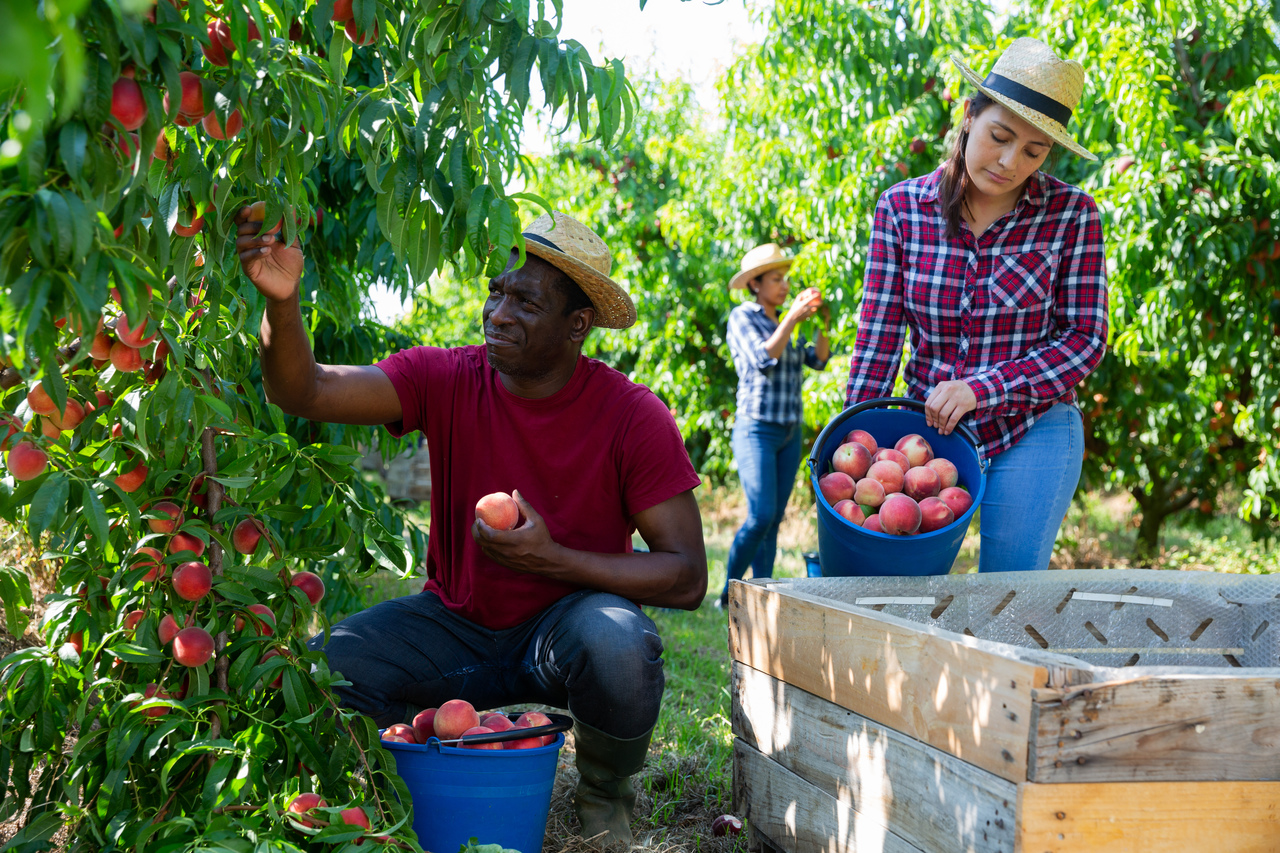-
GeneralGeneralTeacher
-
Public Health Nutrition Homepage
This Public Health Nutrition course is designed primarily for health and public health professionals who are studying public health. It provides in-depth learning related to the concepts of nutrition epidemiology and for those who need it, a review in module one of the basic concepts of nutritional science. Participants will have the opportunity to review the basic concepts of nutritional science, including the essential nutrients, nutrition-related diseases, and food systems and sustainabilty. The course will then go on to explore important nutritional issues on a public and global health scale, and discuss current nutritional policies and interventions that can be applied as part of Health Promotion Interventions.
This Public Health Nutrition course is sponsored by the University of the Incarnate Word (UIW). Like all NextGenU.org courses, it is competency-based, using competencies from the Association for Nutrition, the Association of Graduate Programs in Public Health Nutrition, Inc, and the Nutrition Society of Australia. This course uses learning resources from accredited, world-class organizations such as the World Health Organization, Food and Agriculture Organization, and the U.S. National Institutes of Health.
The course was developed in collaboration with Associate Professor Karen B. Jaceldo-Siegl, MS, DrPH from UIW, and was designed by Pablo Baldiviezo, MD, DiplEd; and Carolina Bustillos, MD, DiplEd; Genikka Camille, B.ED, MSc; Felix Emeka Anyiam, MPH, MScPH, DataSc; Glenda Niles PhD, B.A., A. Ed.; Yhan O'Neil Williams, PhD, Bsc; Hugo Rojas, MD, MSc, DiplEd.
For publications on NextGenU.org’s courses’ efficacy, see NextGenU.org’s publication page. Subscribe to our newsletter to be notified of future updates, new courses, and to be part of our community.
There are six (6) modules to complete, which provide an introduction to:
- Module 1: Fundamentals of Nutritional Science
- Module 2: Food Systems and Sustainability
- Module 3: Nutrition and Public Health
- Module 4: Professional Conduct in Nutrition
- Module 5: Promoting Healthy Nutrition and Well-Being
- Module 6: Nutrition Education
The completion time for this course is estimated at 160 hours, comprising 41 hours of learning resources, 81 hours for time to study content and assimilation, and 38 hours of participating in learning activities and quizzes, to assist the learners in the synthesis of learning materials. This course is equivalent to 4 credit hours.
The course requires the completion of all discussion forums and activities. At the end of each Module, there is a practice quiz of ten (10) multiple-choice questions. After you’ve completed each lesson, quiz, and learning activity, at the end of the course, you’ll have access to a final quiz consisting of fifty (50) multiple-choice questions, and a chance to evaluate this course.
Participants have up to three opportunities to take the final exam and achieve the required score of >=70%. Once you’ve passed that last test, you will be able to download a certificate of completion from NextGenU.org and our course’s co-sponsoring organizations. We keep all of your personal information confidential, never sell any of your information, and only use anonymized data for research purposes. Also, we are happy to report your testing information and share your work with anyone (your school, employer, etc.) at your request.
Engaging with this Course:
You may browse this course for free to learn for your personal enrichment; there are no requirements. To register in this course, it is required that learners have obtained a college-level/bachelor's degree.
To PASS and Obtain a Certificate, a learner must first register for the course and then successfully complete:
- All the reading requirements,
- All quizzes and pass with a 80% with unlimited attempts,
- All peer activities,
- All discussion forums
- The Final Assignment
- The final exam with a minimum of 80% and a maximum of 3 attempts, and
- The self and course evaluation forms.
To obtain credit:
- Complete all requirements listed above for the certificate, and
- Your learning institution or workplace should approve the partner-university-sponsored NextGenU.org course for educational credit, as they would for their learner taking a course anywhere.
NextGenU.org is happy to provide your institution with:
- A link to and description of the course training, so they can see all its components, including the cosponsoring universities and other professional organization cosponsors;
- Your grade on the final exam;
- Your work products (e.g. case study activities), and any other required or optional shared materials that you produce and authorize to share with them;
- Your evaluations -- course, and self-assessments;
- A copy of your certificate of completion, with the co-sponsoring universities and other organizations listed.
To obtain a degree, NextGenU.org co-sponsors degree programs with institutional partners. To obtain a full degree co-sponsored with NextGenU.org, registrants must be enrolled in a degree program as a student of a NextGenU.org institutional partner. If you think that your institution might be interested in offering a degree with NextGenU.org contact us.
We hope that you will find this a rewarding learning experience, and we count on your assessment and feedback to help us improve this training for future students.
Here are the next steps to take the course and earn a certificate.
- Complete the registration form.
- Take the pre-test.
- Begin the course with Module 1: Fundamentals of Nutritional Science. In each lesson, read the description, complete all required readings and any required activity, as well as take the corresponding quizzes.
-
Module 1: Fundamentals of Nutritional Science
 Competencies covered in this module:
Competencies covered in this module:- Be able to understand the scientific basis of nutrition.
- Be able to understand the nutritional requirements from the molecular to the population level for human systems.
-
Module 1: Lesson 1: Public Health Nutrition
Student Learning Outcomes:
Upon completion of this lesson, you will be able to:
- Define the term "nutrition sciences."
- Explain the concept of population health.
- Describe how public health nutrition principles are applied to improve or maintain the optimal health of populations and targeted groups.
3 URLs -
Module 1: Lesson 2: The Human Body and Its Nutritional Needs
Student Learning Outcomes:
Upon completion of this lesson, you will be able to:
- Name the major human body systems and relate their functions.
- Describe the basic human body functions and life process.
- Define the term "nutrients".
- Understand the concept of nutrition energy.
- Summarize the major classification of nutrients:
Carbohydrates
Proteins
Fats
Vitamins
Minerals
Dietary fiber
Water
Oxygen.
- Give examples of common sources of these nutrients present in our food and environment and the unique functions that each nutrient performs inside the human body.
- Describe the nutritional requirements through the life stages.
- Identify the factors that influence changes in nutritional needs.
- Describe how nutritional needs change with factors such as gender, age, physical activity, lifestyle, etc.
- Recommend strategies to address changes in nutritional needs determined by various factors.
- Explain the concept of "metabolism" and its components.
- Differentiate between anabolic and catabolic metabolic pathways.
- Describe the metabolism of carbohydrates, lipids, and amino acids at the level of tissues and organs.
- Describe malnutrition and its health consequences in their country.
- Elaborate on the consequences of a deficit of micronutrients diet in overall health.
- Discuss the importance of proper nutritional consumption, intake, and physical activity to improve health outcomes.
- Describe how the digestive system processes foods from ingestion to defecation.
- Explain how nutrients are transported in the body.
- Explain how energy is being stored by the body.
- Identify the determinants of a food's nutritional value.
- Understand the methods used to determine the nutritional value or nutrient contents of a food.
- Describe the nutritional value of food using the nutrition facts table.
- Describe what makes a component of a food/drink non-nutritive.
- Describe common examples of non-nutritive components of foods and drinks.
- Summarize how non-nutritive components of foods and drinks affect the diet, health, and well-being of a population.
26 URLs, 1 Forum -
Module 1: Lesson 3: Nutritional Epidemiology and Research Methods
Student Learning Outcomes:
Upon completion of this lesson, you will be able to:
- Understand the concept of "nutritional epidemiology".
- Explain the role of nutritional epidemiology in inferring causality.
- Describe how biostatistics data can be used to understand the link between nutrition, health, and disease.
- Explain the importance of health research.
- Identify the various approaches and methods used in health research.
- Examine the advantages and disadvantages of different research approaches utilized in public health nutrition research.
- Describe the steps for designing and conducting research and investigations in the field of public health nutrition.
- Understand key considerations for designing and conducting research and investigations in the field of public health nutrition.
- Examine the challenges and limitations of nutrition study designs in public health.
- Discuss recommendations on how to plan, conduct, analyze, and report nutritional studies and investigations in a responsible, safe, and ethical manner.
- Identify necessary elements to consider when selecting a sample for a study/investigation.
- Identify current sources of information and data on nutrition.
10 URLs, 1 Forum -
Module 2: Food Systems and Sustainability
 Competencies covered in this module:
Competencies covered in this module:- Have knowledge and understanding of the food chain and its impact on food choice; integrate the food supply with dietary intake.
- Know the factors that impact the accessibility, adequacy, and safety of the food supply system (production, processing, distribution, and consumption), their relationship with community food systems, and how they affect the desired outcomes of health promotion and disease prevention.
-
Module 2: Lesson 1: Food Sources and Sustainability
Student Learning Outcomes:
Upon completion of this lesson, you will be able to:
- Define the term "sustainable food".
- Give examples of food sustainability.
- Identify the key determinants of a sustainable food system.
- Interpret how key determinants and factors of food sustainability interact with one another within the food system.
- Classify main sources of food supply according to the country, region, or location.
- Identify the challenges and issues, such as agricultural and environmental impacts, associated with food sustainability.
- Describe common examples of challenges for achieving sustainable and inclusive future food systems.
- Discuss potential solutions and perspectives in addressing challenges to food sustainability to achieve a more inclusive food system.
3 URLs -
Module 2: Lesson 2: Food Systems and Security
Student Learning Outcomes:
Upon completion of this lesson, you will be able to:
- List all Sustainable Development Goals (SDG) that are related to food security.
- Explain how these SDGs contribute to achieving food security and sustainability.
- Identify individual and external factors that influence the food system.
- Assess how these factors and drivers work together to influence food systems, diets, nutrition, and health outcomes.
- Identify health-related effects associated with the food system.
- Describe specific health effects associated with the food system, such as obesity, chronic diseases, micro-nutrient deficiencies, etc.
- Define the term "food security".
- Describe the dimensions of food security through examples.
- Describe the methods of food production, preparation, and processing methods.
- Discuss the beneficial and harmful implications of food production, preparation, and processing to chemical composition and nutritional quality of food.
- Identify major food and beverage companies that are key players in global food consumption and public health.
- Describe beneficial and nonbeneficial practices of "BIG FOOD" and their impact on the global food system and public health.
- Discuss how multinational food and beverage companies work together to increase commitment in food reformulation, consumer information, responsible marketing, promotion of healthy lifestyles, public-private partnerships, etc.
6 URLs -
Module 3: Nutrition and Public Health

Competencies covered in this module:
- Have knowledge and understanding of food in a social or behavioral context (e.g., how factors such as culture, financial circumstances, or governmental policies impact food consumption) at all stages of life.
- Know federal, regional, state, and local governmental structures and the processes involved in the development of public policy, legislation, regulations, and delivery of services that influence the food intake, nutritional status, and health of populations.
- Be able to apply understanding of the aetiology of major public health problems within social and historical contexts, to work with groups and/or communities and/or at the population level, to develop, implement and evaluate nutrition health education and nutrition health promotion programmes.
- Know and have the skills to identify, evaluate and address emerging and controversial food and nutrition issues that impact public health.
- Know and have the skills to identify economic and societal trends which have implications for the health and nutritional status of populations.
- Know and have the skills to apply principles of social marketing for use in the food and nutrition component of health promotion/disease prevention programs and services.
- Know and have the skills to analyze current nutrition research and apply research findings to food and nutrition programs serving high-risk target populations across the lifespan.
- Know and have the skills to assess, plan, implement, and evaluate the food and nutrition components of community-based health promotion/disease prevention interventions.
- Know and have the skills to identify and seek public (local, state, and federal) and private funding for public health and food/nutrition programs and services.
-
Module 3: Lesson 1: Nutritional Health Policy
Student Learning Outcomes:
Upon completion of this lesson, you will be able to:
- Recall the purpose and functions of evaluation in the context of public health nutrition.
- Describe common approaches to evaluate a nutritional public health program or agenda.
- Explain the significance of integrating evaluation in maintaining and regulating nutrition-related public health programs/agendas.
- Describe the process of policy formulation.
- Explain a set of interconnected principles to guide the formulation of public policies to improve health outcomes.
- Identify the meaning of "public policy advocacy".
- Explain the principles of responsible public policy advocacy and how they are implemented.
- Examine the current legislation and corporate governance role in relation to nutrition.
- Name examples of existing government policies and key organizations at the global, national, and local levels that are made to address food and nutritional health issues.
- Examine the significance of government policies and key organizations in addressing food and nutritional health issues.
- Discuss the impact of government policies and key organizations - barriers and opportunities to improve food and nutritional health at the global, national, and local levels.
- Summarize some country examples of public health nutrition policies and their respective provisions.
- Assess the impact of specific nutritional policies in public health across different countries/regions.
9 URLs -
Module 3: Lesson 2: The Social Determinants of Health
Student Learning Outcomes:
Upon completion of this lesson, you will be able to:
- Identify the social determinants of health.
- Identify various factors that influence nutritional practices among individuals, communities, and population groups.
- Differentiate how individuals, communities, and population groups are affected by various factors such as religious and cultural beliefs.
- Explain the financial, socio-economic, and environmental disparities among individuals and their effect on diets, food choices, and nutritional intake.
- Explain strategies to reduce disparities on diets, food choices, and nutritional intake.
- Identify rising and emerging food issues, challenges, and trends.
- Describe public attitudes, behaviors, and perceptions toward emerging food issues, challenges, and trends.
- Explain the role of globalization, economic trends, and societal trends in driving changes in the context of public health nutrition.
- Define "social marketing".
- Explain how social marketing is utilized to promote changes in health behavior and to improve health outcomes.
9 URLs -
Module 3: Lesson 3: Developing Intervention Programs Based on A Community's Nutrition Needs
Student Learning Outcomes:
Upon completion of this lesson, you will be able to:
- Describe the methods of conducting a community nutritional health needs assessment.
- Assess the nutritional needs status of a community.
- Summarize the concepts, models, and theories on health behavior and its changes.
- Explain how behavior change models and other methods can be applied to improve behavior and health.
- Explain the concept of community interventions and their purpose.
- Describe the steps involved in designing a community intervention.
- Understand the concept of health promotion and its significance.
- Describe typical components and activities for effective health promotion programs.
- Describe the steps involved in planning a health promotion program for a particular community.
- Discuss specific steps involved in the following stages of the health promotion program process: planning, development, implementation, and evaluation.
6 URLs -
Module 3: Lesson 4: Acquiring Funding for Nutrition Programs
Student Learning Outcomes:
Upon completion of this lesson, you will be able to:
- Describe the stages involved in the grant lifecycle or process.
- Describe all the necessary components and elements of a funding proposal or a grant application.
- Discuss tips and strategies to make a successful grant/fund proposal.
- Write a grant proposal to gain funding for a particular nutrition program or intervention.
4 URLs -
Module 4: Professional Conduct in Nutrition
 Competencies covered in this module:
Competencies covered in this module:- Understand professional conduct, the Nutritionists’ Code of Ethics, and be familiar with what is evidence of good character.
-
Module 4: Lesson 1: Ethical Issues and Codes of Conduct
Student Learning Outcomes:
Upon completion of this lesson, you will be able to:
- Explain the purpose of the Code of Ethics in the context of public health nutrition.
-
Describe the components of the International Code of Ethics and Code of Good Practice for Dietitians-Nutritionists.
- Explain the role of the International Code of Ethics and Code of Good Practice for Dietitians-Nutritionists to nutrition-related professional practice.
- Identify moral and ethical issues of interventions in nutrition-related settings.
- Discuss the significance of applying ethical standards and professional codes to eating intervention at individual and community levels.
- Identify the ethical issues to eating intervention at the individual and community levels, including issues related to eating disorders interventions.
- Understand the research governance framework and its components.
- Investigate how research governance framework can be applied to public health.
7 URLs -
Module 5: Promoting Healthy Nutrition and Well-Being
 Competencies covered in this module:
Competencies covered in this module:- Understand how to apply the scientific principles of nutrition for the promotion of health and wellbeing of individuals, groups, and populations, and recognize their benefits and risks.
- Know and have the skills to develop, select, disseminate and evaluate appropriate food and nutrition education approaches and materials for health promotion/disease prevention interventions for target populations.
-
Module 5: Lesson 1: Energy Balance and Nutritional Requirements
Student Learning Outcomes:
Upon completion of this lesson, you will be able to:
- Understand the concept of energy balance and the principles and methods of measuring/estimating it.
- Describe the correlation between physical activity and fitness regarding energy expenditure.
- Discuss how body mass and energy balance are maintained and regulated through diet variation, etc.
- Understand the science behind the measurement and estimation of nutritional requirements.
- Understand dietary reference values for the general population.
- Describe the importance of determining the measure of nutritional requirements and dietary reference values for the general population.
- Explore scientific techniques and methods in measuring and estimating nutritional requirements and dietary reference values for the general population.
5 URLs -
Module 5: Lesson 2: Methods of Nutritional Assessment
Student Learning Outcomes:
Upon completion of this lesson, you will be able to:
- Understand the purpose of dietary assessment.
- Identify available methods for dietary assessment and pattern analysis.
- Discuss the strengths and limitations of dietary assessment and methods.
- Describe the general principles of standard assessment methods for nutritional status, including clinical, anthropometric, dietary, biochemical, physiological, and functional methods.
- Articulate the implications of accuracy, validity, calibration, precision, and replicability of dietary data.
- Conduct a dietary assessment for an individual taking into account nutritional assessment tools like ASA24.
8 URLs -
Module 5: Lesson 3: Approaches for Health Promotion and Disease Prevention
Student Learning Outcomes:
Upon completion of this lesson, you will be able to:
- Describe the typology of health promotion and disease prevention.
- Explore approaches for health promotion and disease prevention.
- Describe the multiple influences on what people eat.
- Examine the different approaches that promote healthy food and nutrition-related behaviors.
- Summarize examples of nutrition interventions that are food and skill-based locally and globally.
- Explain how food and skill-based nutrition interventions impact the promotion of healthy food and nutrition behaviors.
- Summarize the impact of nutrition education programs on health promotion.
8 URLs -
Module 5: Lesson 4: From Scientific Principles to Health Promotion
Student Learning Outcomes:
Upon completion of this lesson, you will be able to:
- Describe safety and health-promoting properties of nutrients and non-nutrient components of foods.
- Explain the complex interaction between food, nutrients, and drugs.
- Identify general principles and methods of determining efficiency, health attributes, health claims, and safety food.
- Describe the legal aspects of foods, beverages, and supplements.
- Explore the scientific health promotion strategies to improve human health nutrition for different target populations.
- Discuss the differences in health promotion strategies for health nutrition among different target populations.
- Propose Health Promotion Strategies to improve the Nutritional and health status of an individual or community.
12 URLs -
Module 6: Nutrition Education
 Competencies covered in this module:
Competencies covered in this module:- Know and have the skills to interact sensitively, effectively, and professionally with persons from diverse cultural, socioeconomic, educational, and professional backgrounds and with persons of all ages and lifestyle preferences.
- Know and have the skills to communicate food and nutrition information appropriate for different audiences, including individuals, families, communities, health professionals, media, policy and decision-makers, food industries, and businesses.
-
Module 6: Lesson 1: Cultural Sensitivity and nutrition
Student Learning Outcomes:
Upon completion of this lesson, you will be able to:
- Describe the cultural dimension of food and nutrition.
- Identify cultural differences and similarities in food and public health nutrition.
- Summarize various approaches and strategies to food and nutrition for people of diverse cultural backgrounds.
- Apply food and nutrition approaches that are tailored to people from diverse culture.
4 URLs -
Module 6: Lesson 2: Education for All Societal Levels
Student Learning Outcomes:
Upon completion of this lesson, you will be able to:
- Explain how food and nutrition education can promote societal progress.
- Describe the need and importance of nutrition education training for health and public health professionals.
- Describe key strategies of food and nutrition education for a variety of audiences, i.e., through the media, to families, etc.
- Describe the potential benefits of including faith-based organizations as a strategy to deliver nutrition education.
- Design a message of eating healthy education for a variety of audiences.
4 URLs -
Course and Self Evaluation & Certificate
 In this section, you can provide feedback about this course to help us make NextGenU.org better. Once evaluations are completed, you will be able to download your certificate of completion.
In this section, you can provide feedback about this course to help us make NextGenU.org better. Once evaluations are completed, you will be able to download your certificate of completion.



